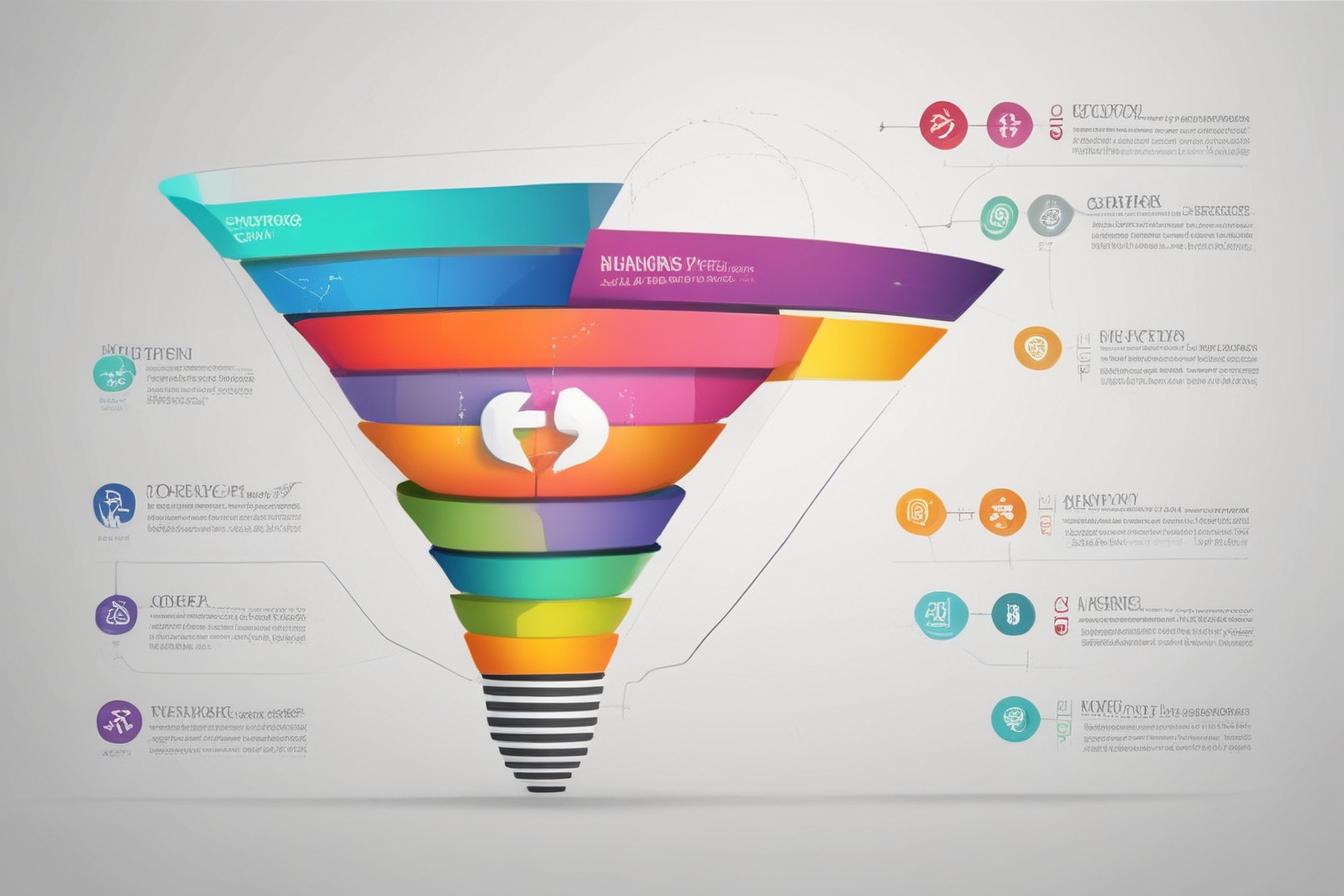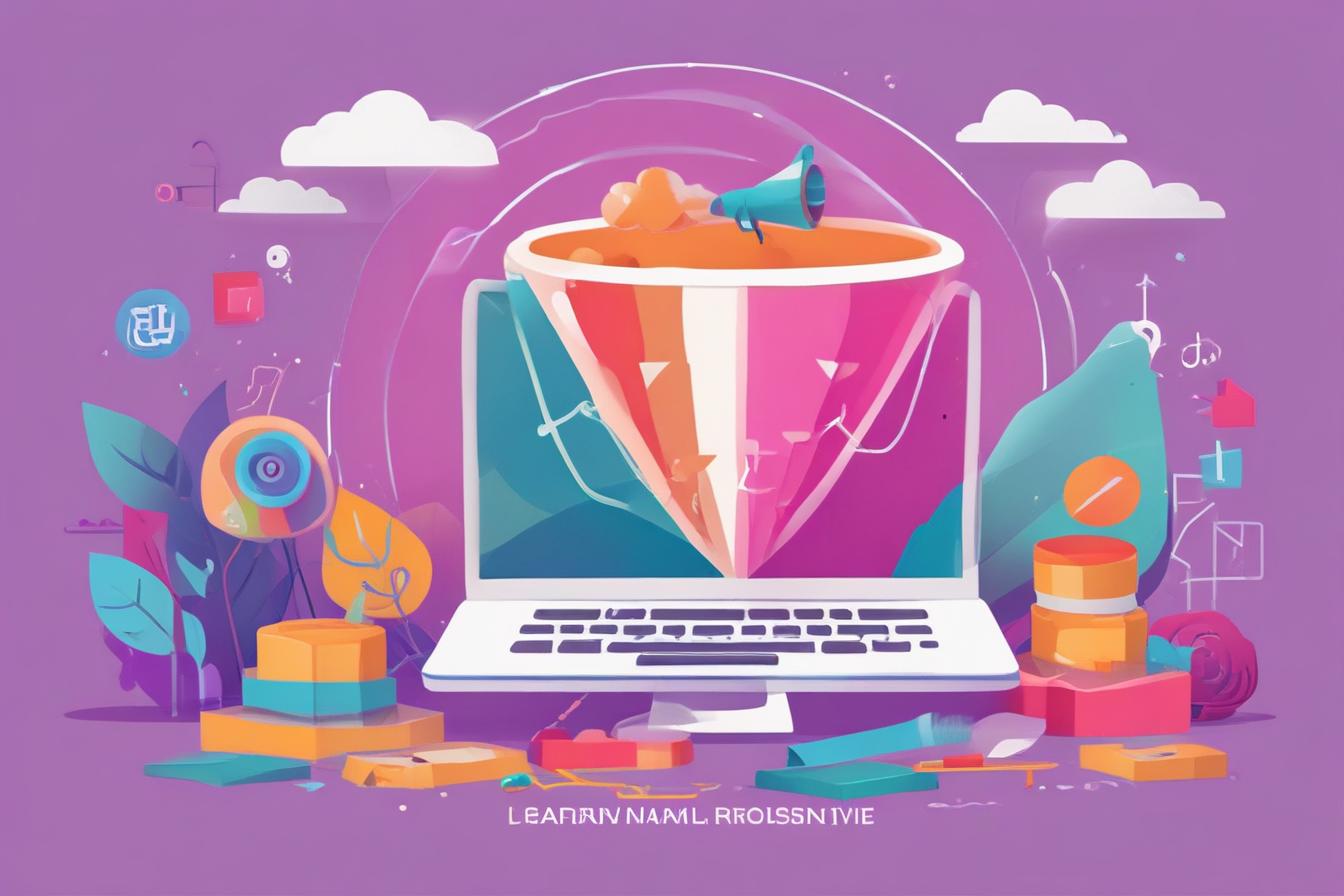What is Funnel Content Analysis?
Funnel content analysis is the process of evaluating the effectiveness of your website’s content in guiding visitors through the conversion funnel. It involves analyzing how users interact with your content at each stage of their journey, from initial awareness to eventual conversion or purchase.
Understanding the Conversion Funnel
The conversion funnel is a visual representation of the steps a visitor takes on their path to becoming a customer. It typically consists of the following stages:
- Awareness: The user becomes aware of your brand, product, or service.
- Interest: The user expresses interest in learning more about your offering.
- Consideration: The user evaluates your product or service against competitors.
- Purchase: The user makes a purchase decision.
- Loyalty: The user becomes a repeat customer and advocate for your brand.
The Role of Content in the Funnel
Content plays a crucial role at each stage of the conversion funnel. It serves to educate, engage, and persuade visitors to move from one stage to the next. Effective content aligns with the user’s intent and addresses their needs, questions, and objections at every step.

Why is Funnel Content Analysis Critical for Growth?
Funnel content analysis is essential for business growth for several reasons:
Identifies Conversion Barriers
By analyzing user behavior and content performance, you can pinpoint areas where visitors are dropping off or experiencing friction. This insights allows you to optimize or create content that addresses these barriers, improving the overall user experience and increasing conversion rates.
Optimizes Content for User Intent
Understanding user intent at each funnel stage enables you to tailor your content to meet their specific needs. This ensures that your content resonates with your target audience, leading to higher engagement and conversions.
Aligns Content with Business Goals
Funnel content analysis helps align your content strategy with your broader business objectives. By identifying which content drives the most conversions, you can prioritize and invest in creating more of that type of content.
Improves ROI on Content Efforts
By optimizing your content for better performance, you can maximize the return on your content marketing investments. This not only leads to more efficient resource allocation but also drives higher revenue growth.
Tools like ContentScale.fr can help streamline and automate this process, generating SEO-optimized content at scale, saving you time and money compared to hiring a content writer or agency.
How to Conduct a Funnel Content Analysis
Conducting an effective funnel content analysis involves several key steps:
Map Out Your Conversion Funnel
Start by mapping out the specific stages of your conversion funnel. This will vary depending on your industry and business model, but should accurately reflect the journey your customers take.
Identify Content for Each Funnel Stage
Audit your existing content and categorize it according to the funnel stage it is intended to address. This will give you a clear picture of any gaps or imbalances in your content strategy.
Analyze Content Performance
Leverage web analytics tools to track key performance metrics for each piece of content, such as pageviews, time on page, bounce rate, and conversion rates. This data will reveal which content is resonating with your audience and driving desired actions.
Gather User Feedback
Supplement quantitative data with qualitative user feedback. Conduct surveys, user interviews, or analyze customer support inquiries to gain insights into pain points, objections, and areas for improvement in your content.

Leveraging Funnel Analysis to Optimize User Experience
Armed with insights from your funnel content analysis, you can take concrete steps to optimize the user experience and drive better results:
Refine or Create New Content
Based on the gaps and areas for improvement identified, refine existing content or create new, targeted content that addresses user needs at each funnel stage. This could include blog posts, whitepapers, case studies, videos, or interactive tools.
Improve Content Discoverability
Ensure that your optimized content is easily discoverable by users at the appropriate stage. This may involve optimizing for relevant search queries, leveraging internal linking strategies, or promoting content through targeted campaigns.
Enhance Content Engagement
Implement design and UX best practices to enhance content engagement and reduce friction. This could include improving navigation, adding multimedia elements, or incorporating interactive features like calculators or quizzes.
Facilitate Funnel Progression
Guide users seamlessly from one funnel stage to the next by incorporating clear calls-to-action and linking to relevant, complementary content. This nurtures leads and keeps them engaged with your brand.
Leveraging AI-powered tools like ContentScale.fr can help you scale your content production efforts, ensuring a consistent supply of high-quality, optimized content to support your funnel optimization efforts.
Common Pitfalls to Avoid in Funnel Content Analysis
While funnel content analysis offers invaluable insights, there are some common pitfalls to be aware of:
Relying Too Heavily on Vanity Metrics
Metrics like pageviews and social shares are useful, but don’t always correlate with conversions. Focus on metrics that directly impact your business goals, such as lead generation, sales, and customer lifetime value.
Ignoring Qualitative User Feedback
Quantitative data tells only part of the story. Neglecting user feedback can lead to missing crucial insights into user pain points, objections, and motivations, resulting in misguided content optimization efforts.
Failing to Regularly Update Analysis
User behavior and preferences are constantly evolving. Failing to regularly update your funnel content analysis means missing out on emerging trends and opportunities to optimize accordingly.
Lack of Cross-Team Alignment
Funnel content analysis should involve collaboration across teams, including marketing, sales, product, and customer support. Siloed efforts can lead to missed opportunities and inconsistent user experiences.
Best Practices for Actionable Funnel Content Insights
To ensure your funnel content analysis efforts translate into meaningful results, follow these best practices:
Establish Clear Goals and KPIs
Define measurable goals and key performance indicators (KPIs) for your funnel content strategy. This will help you track progress, prioritize efforts, and tie your content efforts directly to business outcomes.
Leverage Advanced Analytics Tools
Invest in robust analytics tools that provide granular data and insights into user behavior, content performance, and conversion paths. Tools like heatmaps, session recordings, and attribution modeling can uncover valuable insights.
Continuously Test and Iterate
Treat funnel content optimization as an ongoing process. Continuously test new content, formats, and strategies, and iterate based on performance data and user feedback. Embrace a data-driven, agile approach.
Foster Cross-Functional Collaboration
Encourage collaboration and knowledge-sharing across teams involved in the user journey. This promotes a cohesive, user-centric approach to content creation and optimization.

Leverage AI-Powered Content Generation
To scale your content efforts and maintain a consistent flow of high-quality, optimized content, consider leveraging AI-powered content generation tools like ContentScale.fr. These tools can help you produce a high volume of SEO-optimized content at a fraction of the cost of traditional content creation methods, enabling you to execute your funnel content strategy more efficiently and cost-effectively.
By following these best practices and leveraging advanced tools like ContentScale.fr, you can unlock the full potential of funnel content analysis to drive growth and deliver exceptional user experiences that keep your customers engaged and loyal.
